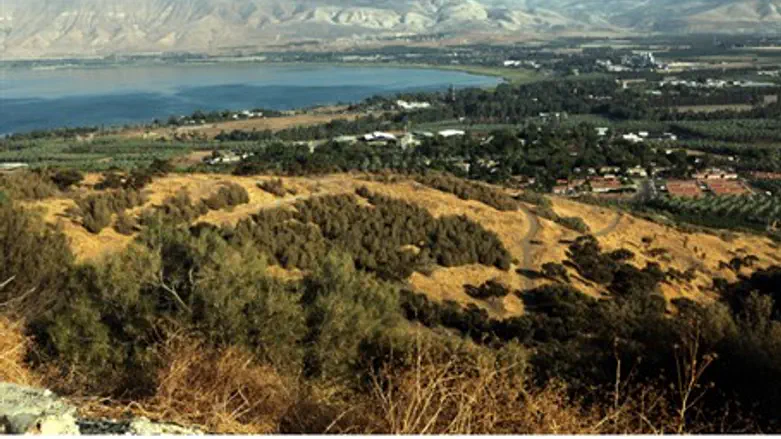
Moreshet Ha'galil (Heritage of the Galilee), which investigates Jewish heritage throughout the Galilee, plans to hold a unique tour this Friday along the paths followed by the Jewish priestly communities (mishmarot haKohanim) as they fled to the area from Jerusalem, following the destruction of the Second Temple in 70 CE.
Shabtai Shiran, manager of the organization, told Arutz Sheva about the tour. He notes that the kinot, special prayers recited on Tisha B'av commemorating the fall of the Temple, detail the stops the priestly communities took in fleeing to the Galilee, which was almost completely Jewish at the time.
While some stops are well-known, others are in what are currently Arab towns, reveals Shiran. Two examples are Deir Hanna, which in the past was Kfar Hanna, and Arabe that was Kfar Arav in the time of the destruction. According to Shiran, the Arab villages currently occupying several of the stops allow visitors as long the tour doesn't show clear "nationalistic characteristics."
The Kohanim lived around Jerusalem as part of their priestly service in the Temple. After the destruction they avoided the area, with its heavy Roman presence, going to the Galilee to stay in completely Jewish communities, reports Shiran.
This migration occurred to protect the women from rape, and over concern that proximity with the Romans would affect the status of ritual purity that the Kohanim strictly guarded, following the Roman soldiers' contact with the dead that transmits ritual impurity.
The Kohanim therefore "wandered to a place that was completely Jewish. ...In 200 CE the Galilee was completely Jewish," comments Shiran.
He adds that aside from the Kohanim, the Sanhedrin (Council of Sages) also fled to the Galilee following the destruction, being driven gradually further from Jerusalem along 10 different stops.
Shiran adds that many Arab villages don't deny their Jewish past, giving the example of Shfaram where a sign on the municipality building notes that the Sanhedrin resided at the location. Shfaram further preserves the ancient synagogue at the site, even though Jews do not come to pray there today.
Another example Shiran gives is Kafr Yasif, where an ancient Jewish cemetery has been preserved.